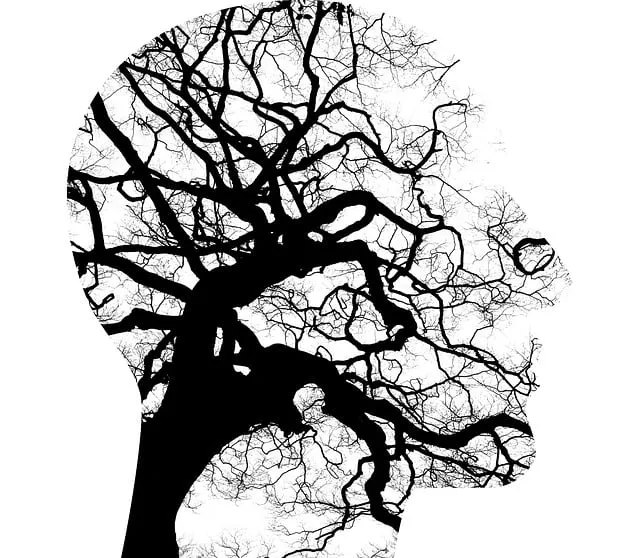The Kaiser Permanente behavioral health center in Greenwood Village prioritizes patient safety through comprehensive risk assessment and harm minimization strategies. Evaluating medical, environmental, and emotional risks, they implement tailored interventions, like community outreach programs and staff coping skills training, to build supportive networks and reduce isolation. Their robust plan includes evidence-based practices for trauma, substance abuse, and co-morbid conditions, along with proactive risk management systems. By integrating self-care, positive thinking, and stigma reduction, the center empowers patients with long-term coping mechanisms while ensuring an inclusive, nurturing environment for exceptional mental healthcare services in Greenwood Village.
At the Kaiser Permanente Behavioral Health Center in Greenwood Village, risk assessment and harm minimization are paramount for ensuring patient safety and well-being. This article delves into the critical process of identifying potential risks and vulnerabilities within the healthcare setting. We explore how comprehensive planning, strategic implementation, and continuous evaluation foster a robust harm prevention framework. By learning from Kaiser Permanente’s approach, healthcare professionals can enhance their risk management practices, ultimately improving patient outcomes at behavioral health centers nationwide.
- Understanding Risk Assessment at Kaiser Permanente Behavioral Health Center Greenwood Village
- Identifying Potential Harms and Vulnerabilities
- Developing a Comprehensive Minimization Plan
- Implementing Effective Strategies for Risk Management
- Continuous Evaluation and Improvement in Harm Prevention
Understanding Risk Assessment at Kaiser Permanente Behavioral Health Center Greenwood Village

At Kaiser Permanente Behavioral Health Center Greenwood Village, risk assessment is a cornerstone of their comprehensive approach to patient care and safety. It involves a meticulous process where healthcare professionals analyze potential hazards and vulnerabilities unique to each patient. By identifying risks, from medical conditions to environmental factors, the center can proactively implement harm minimization strategies tailored to individual needs.
This holistic view extends beyond clinical settings, integrating community outreach programs like Mind Over Matter Principles and Inner Strength Development initiatives. Such programs not only empower patients with coping mechanisms but also foster a supportive network, reducing risks associated with social isolation and enhancing overall well-being. This integrated risk assessment and harm minimization planning ensure that Kaiser Permanente Behavioral Health Center Greenwood Village provides optimal care in a nurturing environment.
Identifying Potential Harms and Vulnerabilities

Identifying potential harms and vulnerabilities is a critical step in risk assessment and harm minimization planning, especially within healthcare settings like the Kaiser Permanente behavioral health center in Greenwood Village. This process involves thoroughly scrutinizing various aspects to ensure the well-being of both patients and providers. One key focus area is recognizing emotional and psychological risks among healthcare workers, which are prevalent given the demanding nature of their roles.
By implementing coping skills development programs and burnout prevention strategies for healthcare providers, such as those promoting emotional regulation, the center can proactively address these vulnerabilities. Such initiatives aim to equip staff with effective tools to manage stress, enhance resilience, and maintain optimal performance while providing quality care to patients.
Developing a Comprehensive Minimization Plan

At a Kaiser Permanente behavioral health center in Greenwood Village, developing a comprehensive harm minimization plan is paramount to ensuring patient safety and well-being. This involves a meticulous process where mental health professionals assess various risks associated with treatment, including those related to trauma, substance abuse, or co-morbid conditions. By leveraging evidence-based practices and integrating specialized Trauma Support Services, the center crafts tailored strategies aimed at early intervention and proactive risk management.
The plan encompasses diverse initiatives such as enhancing communication protocols, implementing crisis intervention training for staff, and establishing robust monitoring systems. Through these efforts, the behavioral health center aims to foster a supportive environment that not only addresses existing mental health concerns but also promotes Mental Health Awareness among all stakeholders. This holistic approach ensures that patients receive comprehensive care while minimizing potential harms throughout their journey towards recovery.
Implementing Effective Strategies for Risk Management

Implementing effective risk management strategies is paramount for any healthcare facility, especially those focusing on behavioral health, such as the Kaiser Permanente behavioral health center in Greenwood Village. A comprehensive approach involves a multi-faceted strategy that caters to individual patient needs while considering broader community influences. One key component is integrating Self-Care Practices tailored to address specific mental health challenges. By promoting Positive Thinking and fostering environments free from Mental Illness Stigma Reduction Efforts, these centers can significantly enhance patient outcomes and overall well-being.
Through proactive risk assessment, healthcare professionals can identify potential triggers and vulnerabilities early on. This enables them to implement evidence-based interventions that not only mitigate risks but also empower patients with coping mechanisms for the long term. By fostering a culture of open dialogue and support, behavioral health centers like Kaiser Permanente Greenwood Village can contribute to reducing stigma, encouraging early intervention, and ultimately improving mental health outcomes in their community.
Continuous Evaluation and Improvement in Harm Prevention

At the Kaiser Permanente behavioral health center in Greenwood Village, continuous evaluation and improvement are at the heart of their harm prevention strategies. They regularly review data from patient interactions, treatment outcomes, and feedback mechanisms to identify areas for enhancement. This proactive approach ensures that services are not only effective but also tailored to meet the evolving needs of their diverse patient population. By analyzing trends in mental illness stigma reduction efforts and cultural sensitivity in mental healthcare practice, they can refine their methodologies to foster a more inclusive environment.
Moreover, the center invests in resilience-building initiatives, incorporating these into treatment plans to empower patients with coping mechanisms that address both immediate challenges and potential future setbacks. This holistic perspective not only minimizes harm but also promotes long-term wellness, reflecting their commitment to delivering exceptional mental healthcare services.
Risk assessment and harm minimization planning at the Kaiser Permanente Behavioral Health Center in Greenwood Village are essential components of providing safe, effective care. By understanding the unique risks within their setting, identifying potential harms, and developing comprehensive strategies, the center can ensure a proactive approach to patient safety. Continuous evaluation and improvement loops are vital to stay abreast of emerging challenges and best practices, ultimately enhancing the quality of care delivered at this leading behavioral health facility.






